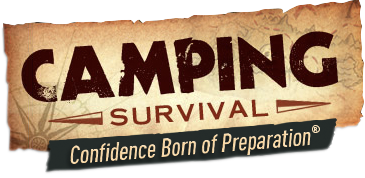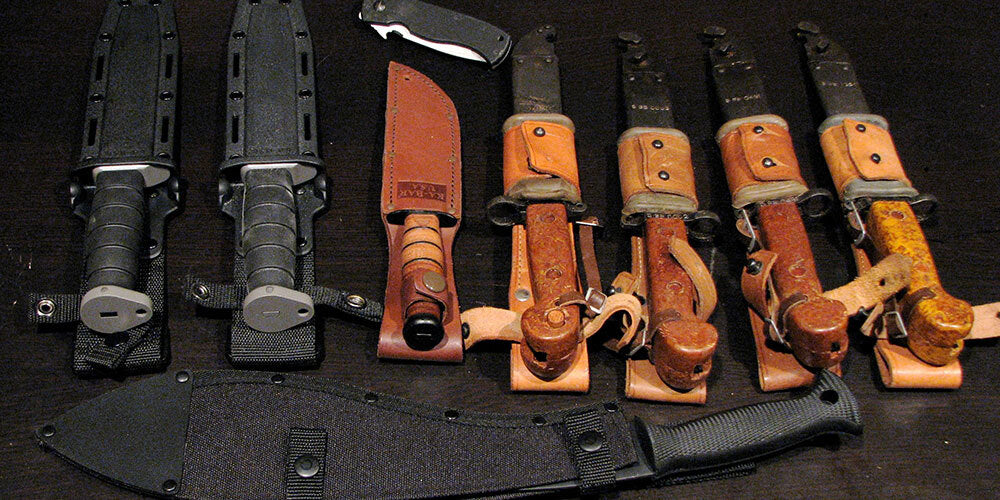The best survival advice ever might just be from the great Dick Marcinko who said, “Knives are like credit cards; don't leave home without 'em and always carry several.”
The question is, of all the knives out there, which should you carry?
Today we’re going to take a stab at that question (pun intended) with our list of the five knives every survivalist needs.
#1 Pocket Knife

Let’s start with the easiest selection. A good pocket knife can be your best friend. These small versatile knives are general the first go to tool for many small jobs. What they may lack for in size or strength they surely make up for in versatility. Almost any small job can be completed by a good pocket knife, but here are a few of our favorites:
- Cutting and eating food
- Making kindling
- Cleaning fish or small game
- Cutting rope
- Open packaging
- Removing clothes around wounds
#2 Survival Knife

When we say “survival knife,” we’re not referring to a specific knife. Instead, what we mean is a knife that can be applied successfully to a defined set of survival tasks. Most survival knives will be fixed blade and come with either a serrated or straight edge. Here are some other criteria that will make your next survival knife a standout (from the good folks at survivalschool.us):
- Blade length between nine and 11 inches
- Full tang
- 3/16 to ¼-inch blade thickness with a 90-degree spine
- Pointed tip
- Solid pommel
- Bonus: Fire starter for ferro rod
#3 Multitool

While not a “knife” per say (though many multi-tools include knives) a solid multitool is a no-questions-asked must-have for your survival kit. We’ll put it this way: there’s a good reason your dad and his dad both had one. They’re the very definition of “practical” tools that can be used every day. You’ll know you’ve found a good one if it includes:
- Knife
- Pliers
- Scissors
- Saw
- Can opener
- Screwdriver
#4 Machete

Breaking news: machetes are more than just horror movie props! They’re the ultimate multi-tool before there was such a thing. We’ve seen farms in developing countries tend with only a machete and some elbow grease.
The magic of the machete is the way it crosses the line between an axe and a knife. It is great for chopping and cutting. The machete’s sturdy hand and weighted upper blade make it give it the perfect feel and striking velocity for maximum impact. Machetes are used around the world for clearing paths, chopping brush, and even butchering wild game. At the campsite or in the wilderness, there are few tools better:
- Clearing brush to make a campsite
- Cutting/maintaining trails
- Chopping wood
- Creating shelter from bark and wooden poles
#5 Hand Saw

Hand saws are light, compact, and often foldable to easily stow away in your pack. They’re great for collecting timber for shelter and cutting firewood. A few things to keep in mind when looking for your next hand saw:
- Fixed blade vs chainsaw blade. Fixed blades are solid straight blades with teeth whereas chainsaw blades are flexible. Consider how you’ll use the blade before making a final decision on which type is best for you.
- Does it fold? A folding blade is likely to be a bit shorter but when closed protects the teeth of the blade from any harm from accidental exposer. They’re also easier to carry which is why we recommend them.
- Length of the blade. Go with a longer blade, as much as is practical. A longer blade gives you longer cuts per stroke, reducing the time it takes to saw through the wood (it will also take up more space in your pack and be harder to travel with).
Image Credits:
"Camillus Air Force Survival Knife" by CapCase is marked under CC0 1.0. To view the terms, visit https://creativecommons.org/licenses/cc0/1.0/
"Hand Saws" by F. D. Richards is licensed with CC BY-SA 2.0. To view a copy of this license, visit https://creativecommons.org/licenses/by-sa/2.0/
"MACHETE" by elbragon is licensed with CC BY 2.0. To view a copy of this license, visit https://creativecommons.org/licenses/by/2.0/
"Everett's Kennebunkport Pocketknife" by Joe Shlabotnik is licensed with CC BY-NC-SA 2.0. To view a copy of this license, visit https://creativecommons.org/licenses/by-nc-sa/2.0/
"Knives Sheathed" by mrbill is licensed with CC BY 2.0. To view a copy of this license, visit https://creativecommons.org/licenses/by/2.0/


4 comments
added to last post – All of that said, I would want a good machete and quality saw with me as my first line and add the knives unless weight was a factor. I would opt for the knives only if I needed to keep a low profile or was limited by weight. As I stated earlier, I can get by with only the knives, if need be, but they would work for all my needs in a pinch
the machete you need should be of decent quality, unless you are going to abuse it. I know that the knife shown is of low quality (I had one and it didn’t stand up), but a nine-inch blade will be better suited for survival. You want one with a full tang and that you can easily tie to a stick to extend your reach. The long blade will assist you in splitting wood and I have used mine to cut down small trees. It can replace a machete in a pinch. I like one with a good saw back, as that will help replace the saw (needs to be good saw teeth though). As for the pocketknife, you should have one that is quality, has a locking blade if possible, and a good saw. I have several, but my fav is my Victorinox Rucksack (it has a lock, a saw, a can opener, a bottle opener {which is not needed for most apps}, a corkscrew, and an awl, and the usual toothpick and tweezers) With only these two knives I can do almost anything I need to do in a SS.
I have a cheap machete and a kukri machete from cold steel. Which do you think would be better one to use
I pretty much agree, but laughed at the “9-11 inch blade” part and the picture was of an aircrew survival knife, with a 4-5 inch blade. 9-11 inches is rather limiting criteria when the knife shown IS actually an issue survival knife.